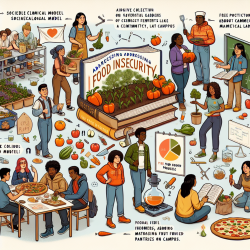Introduction
Understanding and managing emotions is a crucial skill for children, impacting their social interactions, academic performance, and overall well-being. As educators and parents, fostering emotional literacy in children can be achieved through various engaging activities. TinyEYE, a leader in online therapy services, provides insights and resources to aid in this development.
The Importance of Emotional Literacy
Emotional literacy involves the ability to recognize, understand, and express emotions effectively. It is foundational for developing empathy, building relationships, and managing personal emotions. By enhancing a child's emotional vocabulary, we equip them with the tools to navigate their world more confidently.
Using a Feelings Chart
A feelings chart is a practical tool that helps children identify and articulate their emotions. This visual aid includes a range of emotions such as happy, angry, nervous, disappointed, and more. By regularly discussing these feelings, children learn to associate facial expressions and situations with specific emotions.
Activities to Foster Emotional Awareness
- Picture Drawing: Encourage children to draw or stick pictures that represent different emotions. This activity not only enhances their understanding but also makes the learning process enjoyable.
- Role-Playing: Acting out scenarios where children express various emotions helps them understand the physical reactions associated with feelings. This can be a fun and interactive way to learn.
- Feelings Diary: Maintain a daily diary where children can note how they felt throughout the day. Discussing these entries at the end of the day helps them understand that feelings can change and evolve.
Discussing Emotions
Open discussions about emotions are vital. Asking questions like "Why do you think the boy is happy?" or "Why do you think the girl is angry?" encourages children to think critically about emotions and their causes. This can be done in various settings, such as while waiting for a bus or during family meals.
Body Reactions to Emotions
Understanding how emotions manifest physically is another aspect of emotional literacy. Children can learn to associate feelings with physical reactions, such as trembling knees when nervous or a racing heart when excited. Acting out these reactions can be both educational and entertaining.
Expanding Emotional Vocabulary
Creating an A-Z of feelings can be a creative way to expand a child's emotional vocabulary. Encourage children to think of one or two emotions for each letter of the alphabet. This not only broadens their vocabulary but also deepens their understanding of different emotions.
Finding Solutions to Difficult Emotions
Teaching children how to manage difficult emotions is crucial. Encourage them to think of solutions that adhere to the 'Golden Rules' - solutions that make them feel better without harming themselves or others. Discussing personal experiences where these rules were applied can provide valuable learning opportunities.
Conclusion
Enhancing emotional literacy in children is a continuous process that requires patience, creativity, and engagement. By using tools like feelings charts and engaging in discussions and activities, we can help children navigate their emotional world more effectively.
For more information, please follow this link.










